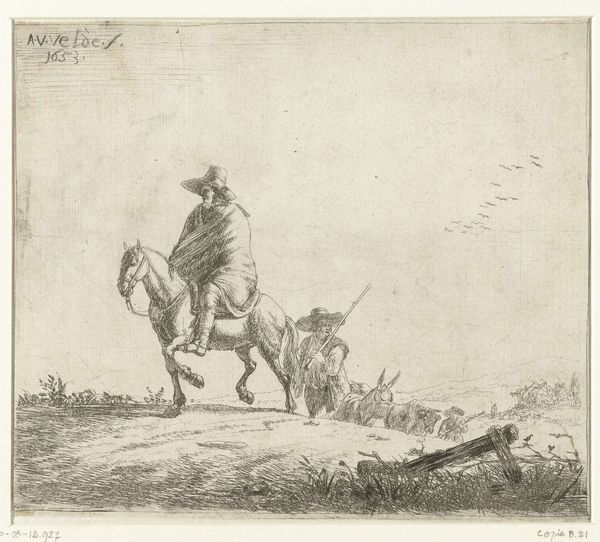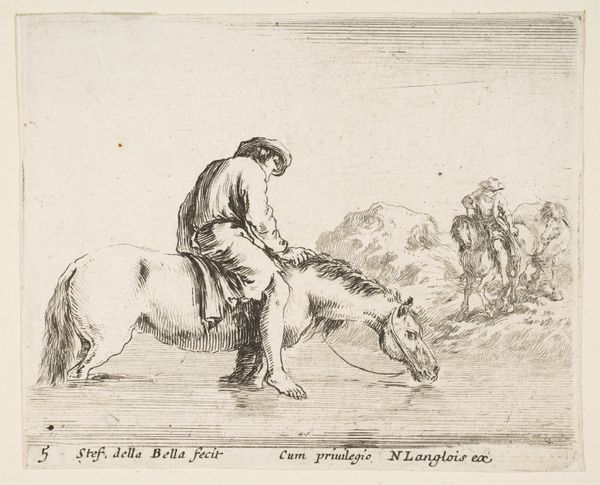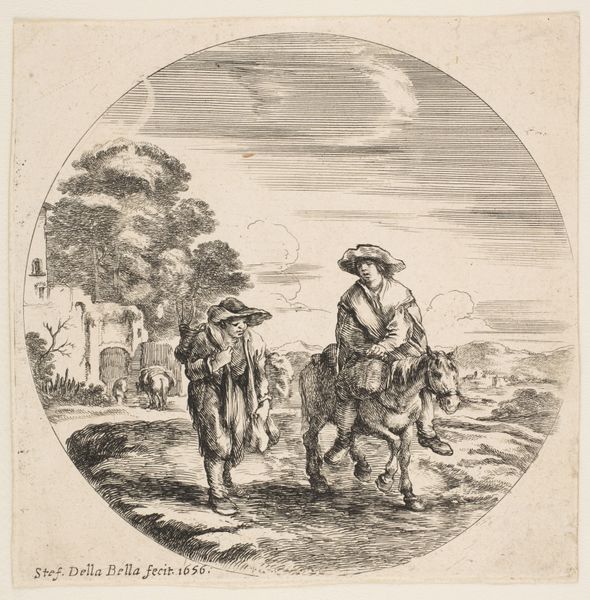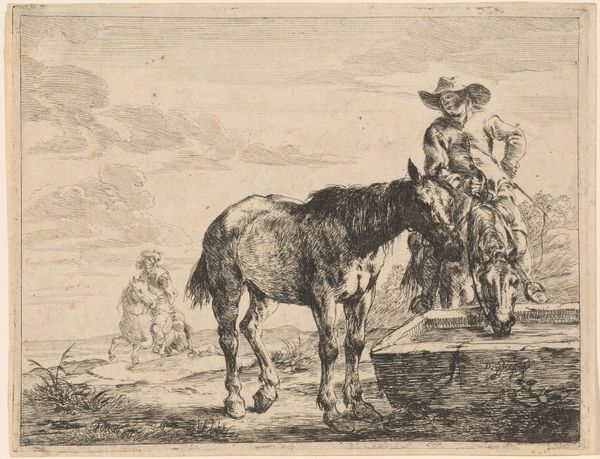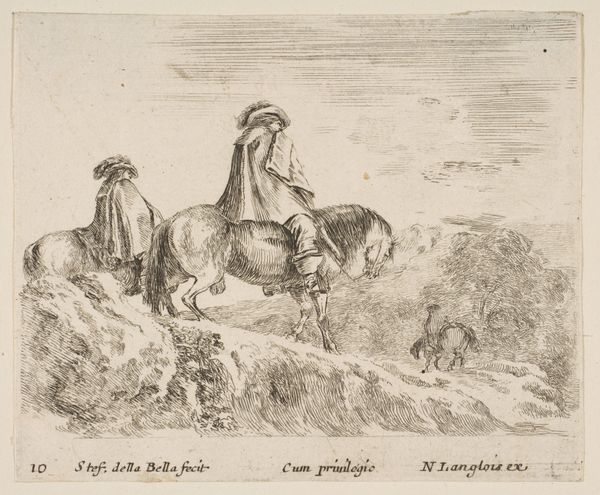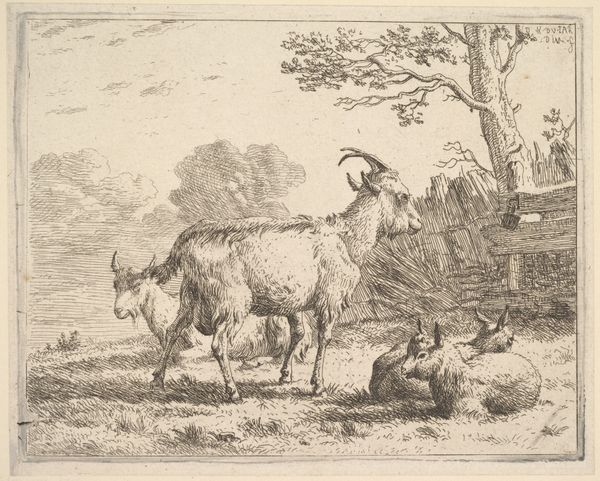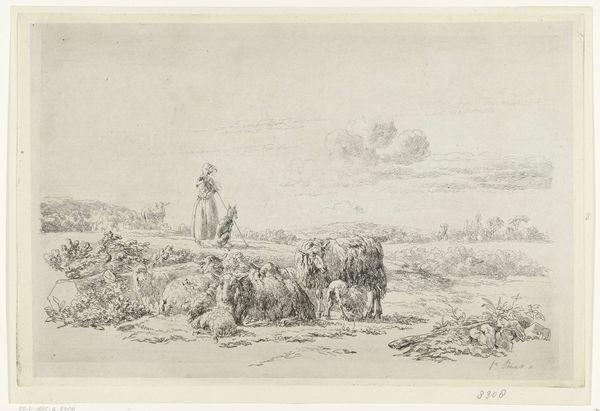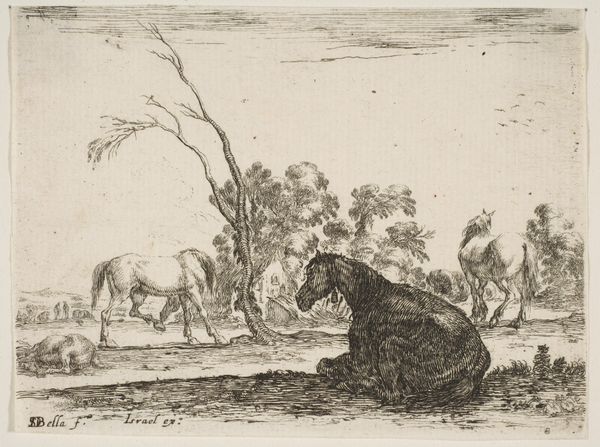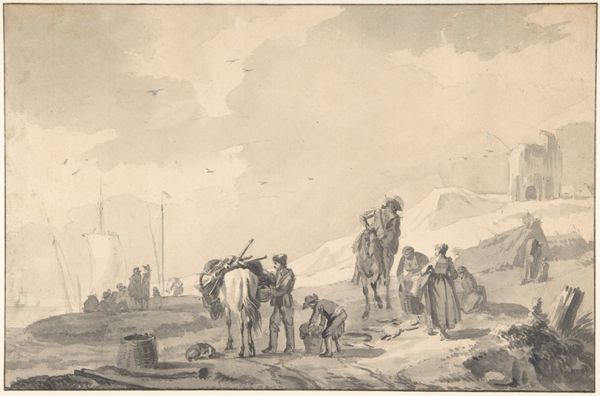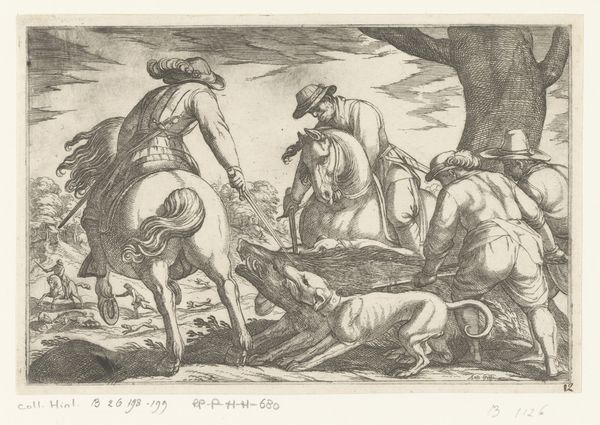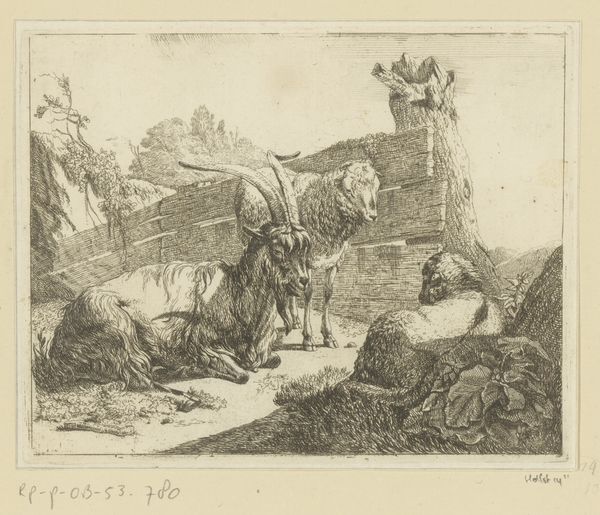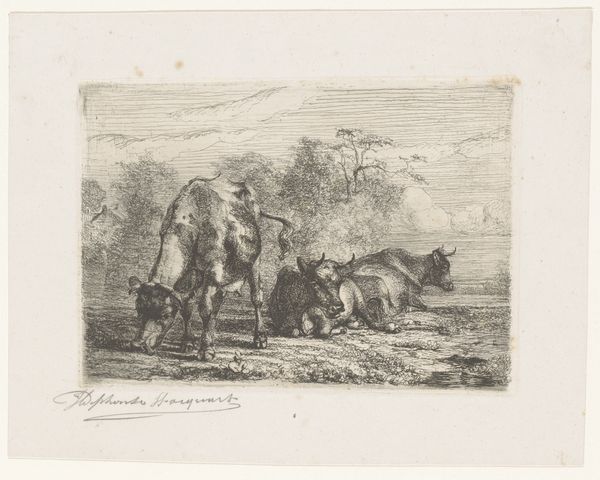
Plate 8: a horseman descends a riverbank, another horseman in river to right, from 'Diversi capricci' 1639 - 1649
0:00
0:00
drawing, print, etching
#
drawing
#
baroque
# print
#
etching
#
landscape
#
figuration
#
horse
#
men
#
line
#
genre-painting
Dimensions: Sheet: 3 3/8 × 3 15/16 in. (8.5 × 10 cm)
Copyright: Public Domain
Curator: Here we have Stefano della Bella's "Plate 8: a horseman descends a riverbank, another horseman in river to right, from 'Diversi capricci'," dating from between 1639 and 1649. Editor: It strikes me as a study in contrasts; the crisp, precise lines forming detailed figures against a loosely sketched landscape. Almost feels unfinished in its deliberate imbalances. Curator: Precisely. Della Bella was working in a tumultuous period. Considering the backdrop of the Thirty Years' War, these figures and their landscape become emblems of power and displacement. The horse, a status symbol, moves across a border, suggesting both mobility and perhaps the anxieties of the era's political instability and the aristocracy’s relationship with violence. Editor: I am fascinated by the technique. The delicate hatching suggests depth and shadow without overpowering the linear structure. Look how the light catches the rider’s cloak, highlighting its texture but not diminishing its flat shape. It adheres beautifully to baroque conventions while demonstrating a very controlled graphic hand. Curator: Absolutely. Further, if we read this print through the lens of gender theory, the dominating figure of the horseman traversing this liminal space becomes emblematic of patriarchal movement and control, pushing boundaries while the distant second rider suggests the marginalisation of other actors. It encourages thinking about who is being excluded in this drama. Editor: Though, perhaps that secondary figure anchors the composition. Their presence in the water provides depth, guiding the viewer's eye into the landscape, emphasizing the vastness through controlled perspective. Curator: True. And, reading it now, its resonance continues. Even in the present, the act of crossing boundaries has deeply political meaning and elicits emotions connected with ownership and liberty. Editor: For me, this piece showcases the power of simplicity. It creates space with light, evokes depth without overcrowding the scene, and captures so much tension with just lines. Curator: It truly exemplifies how even seemingly simple etchings can invite profound socio-political consideration when thoughtfully engaged with from the perspective of those who seek deeper and more nuanced narratives.
Comments
No comments
Be the first to comment and join the conversation on the ultimate creative platform.
